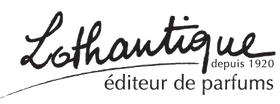What is donkey milk good for? What is goat milk? We are diving into the ancient histories, cosmetic practices, and potential benefits of these natural alternative milks.
What is donkey milk?
Donkey milk is the milk from a domesticated female donkey also known as a jenny. Donkey milk production is also quite different to other conventional dairy processes as a jenny has a low gland capacity and can give approximately half a litre of milk per day. Thus, most donkey farms are quite small with typically no more than ten donkeys.

Meanwhile, goat milk is the milk from domesticated goats, and it is the most commonly consumed dairy around the world. It has more protein than other milks, which makes it easier for most people to digest. As it is more digestible, it can also help to improve nutrient deficiencies. It is also rich in calcium, vitamin A, fatty acids, and decreases bad cholesterol.
Donkey milk is also very similar to human milk in its lactose, minerals, proteins, and amino-acid contents. In fact, it was used as a replacement substance to feed orphan babies in the early 19th century and it is still used today as a hypoallergenic alternative formula.
It is also lower in fat, and it has more vitamin D than other milks. The whey protein is well-known for its antimicrobial properties, which contains compounds that can prevent the growth of bacteria and viruses. These compounds may also help to improve the immune system by releasing cytokines (particularly for elderly people).
Ancient uses of donkey and goat milk
Donkey milk and goat milk have been used for both medicinal and cosmetic purposes for thousands of years. Famously, Queen Cleopatra regularly took baths in donkey milk to maintain the vitality of her beautiful skin. Historic records show Cleopatra was not alone in this beauty trend as donkey milk was used often by ancient Egyptians to revitalize the skin.

In ancient Greece, Hippocrates believed in the medicinal benefits of donkey milk, and it was prescribed to treat many conditions from poisoning and fevers, to healing wounds and nose bleeds. Pliny the Elder also wrote about donkey milk as a remedy to fight fevers, reduce wrinkles, and to treat fatigue in his work, Naturalis Historia, during the Roman era.
Elizabeth I, Queen of England, was supposedly a fan of soaking in goat’s milk. In fact, reportedly, goat milk is also the reason European milkmaids gained a reputation for their clear complexions. Pauline Bonaparte, Napoleon’s sister, like many royals, was also said to have used donkey milk in her own skincare routine.
The benefits of donkey milk continued to be studied in the Renaissance by the likes of Georges-Louis Leclerc the Comte de Buffon, a French naturalist, mathematician, and cosmologist.
Cosmetic benefits of donkey and goat milk
Today, donkey milk remains popular in the cosmetic industry as it is both gentle and soothing, which makes it ideal for all skin types. It is rich in anti-inflammatory properties including lactic acid, which is a naturally purifying agent. It acts as a gentle exfoliant and stimulates cell renewal for healthier looking skin.
Goat milk has the same pH levels as human skin. This means a cleansing soap with goat milk does not disturb the skin’s natural acid mantle making it perfect for sensitive skin. It is also high in lactic acid, which helps your skin to retain moisture and look smoother.
Donkey milk can also be a great anti-aging skincare tool as it is rich in amino acids, vitamin C, and calcium. They can help to boost collagen and elastin to help maintain a youthful look. Donkey milk can help to keep your skin healthy, soft, and hydrated—making it a beauty secret for the ages.
What is one of your go-to beauty products?




